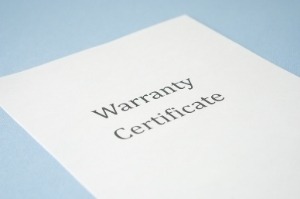
Richard Burt Professional Law Corporation
Mon - Fri: 9 AM - 6 PM
In communicating through a website with a lawyer you are thinking of hiring, you should not provide any confidential information concerning your legal matter until an attorney-client relationship has been formed.
Sending an email to Richard Burt or leaving a voice mail for him or his assistant (and a reply from either) does not create an attorney-client relationship.
No attorney-client relationship will be formed until you and Mr. Burt have agreed that he should represent you, he has determined that there is no conflict with an existing client, you have signed an engagement letter that sets forth the terms of the representation, and, when requested, you have made a fee deposit.
Please note that the initial consultation is solely to determine the nature of your legal matter and to discuss fees. Mr. Burt does not offer free legal advice.
After an attorney-client relationship has been formed, email (and voice mail) may of course be freely used for confidential attorney-client communications.
If we try to call you at a telephone number that you provide to us and are unable to reach you (and your voice mail is full or is not set up), we may text you at that number to let you know that we tried to call you. By sending an email via this website or by calling and leaving a voice-mail message, you consent to receiving such texts. At any time, you may reply STOP to opt-out from further messages.
NOTE: Mr. Burt does not handle litigation of any kind. If you wish to sue someone, are being sued, or need to make a court filing of any kind, Mr. Burt cannot help you. You should not contact him for those services.


Breach of warranty in the sale of goods and the statute of limitations
Cardinal Health 301, Inc. v. Tyco Electronics Corp. (2008) 169 Cal. App. 4th 116.
Holdings Noted
 The four-year statute of limitations bars warranty claims unless the warranty explicitly extends to future performance of the goods and discovery of the breach must await such future performance. A warranty that the goods will have a “mechanical life of 50,000 cycles” does not come within the future-performance exception because the warranty is not for a specific and defined period of time. In addition, the exception does not apply where it is possible for the purchaser to test the goods and determine non-compliance with the warranty.
The four-year statute of limitations bars warranty claims unless the warranty explicitly extends to future performance of the goods and discovery of the breach must await such future performance. A warranty that the goods will have a “mechanical life of 50,000 cycles” does not come within the future-performance exception because the warranty is not for a specific and defined period of time. In addition, the exception does not apply where it is possible for the purchaser to test the goods and determine non-compliance with the warranty.
Repair efforts by the seller can toll the statute of limitations, but the seller’s assisting the buyer in investigating the cause of failure of goods is not a repair effort.
A breach of contract claim based solely on a breach of warranty is governed by the four-year statute of limitations set forth in §2725.
A buyer’s failure to notify the seller of a breach of warranty within a reasonable time after the buyer discovers or should have discovered a breach bars the buyer from any remedy. Not giving any notice during the lengthy time before filing suit is such a failure and bars recovery.
A buyer and seller must be in privity of contract for the buyer to have an implied warranty claim against the seller, but “direct dealings” between the buyer and the seller’s supplier can suffice for a claim by the buyer against the seller’s supplier.
A company that takes over another company’s manufacturing operations and continues to supply a product may be held to have made a warranty of fitness for purpose based on the original company’s actions in the absence of a disclaimer.
The Short Story
In 1998, Cardinal, a healthcare products company, began to develop an automated medication dispensing machine for hospital use. To make this system work, Cardinal needed a special electrical connection for a container that would be repeatedly removed from and put back into the machine. Because Cardinal did not have experience in designing or manufacturing electrical connectors, Cardinal contacted T&B, which had substantial expertise in this field. T&B presented Cardinal with a proposed design drawing for a connector based on Cardinal’s stated requirements.
T&B entered into a contract with Cardinal to sell one million connectors to Cardinal at $1.17 each. T&B agreed that the connectors would be “free of defects in material and workmanship.” The written requirements included: “mechanical life 50,000 cycles” and specified gold plating in the contact area. Cardinal expected to hire a contract manufacturer to build the product that would use the connectors. T&B expressly agreed to “honor [the $1.17 price] for the . . . authorized contract manufacturer” chosen by Cardinal. T&B delivered 85,000 connectors directly to Cardinal. After Cardinal selected Remec (a contract manufacturer) to assemble the product that required the connectors, Cardinal then “canceled” its agreement with T&B and entered into a new agreement with Remec, the contract manufacturer, for the supply of the completed product. The contract manufacturer then entered into a separate agreement with T&B for the supply of the remaining approximately 900,000 connectors.
In May 2000, Cardinal began selling the machines to hospitals for $65,000 each. At about the same time, Tyco purchased the electrical connector division of T&B (just the division, not the entire company). Cardinal learned of this fact when a Tyco employee formerly employed by T&B informed a Cardinal employee responsible for the product that the acquisition had occurred and that “nothing changes until we tell you further.” Cardinal’s relationship with Tyco was the same as its relationship with T&B before the acquisition. T&B continued to exist, manufacturing and selling other electrical products.
Shortly after the acquisition, Tyco entered into an agreement with the contract manufacturer for the sale of the connectors, who purchased the connectors directly from Tyco, and then incorporated them in the product and delivered the product to Cardinal. Tyco adopted all of the specifications and design drawings that had been negotiated between Cardinal and T&B. Tyco manufactured the connectors in the same manner as had T&B, used the custom-made tools T&B had created for the manufacturing process and charged the same price.
Within the year, hospitals began notifying Cardinal they were experiencing problems with the machines. After an extended investigation, and based on the report of an expert, Cardinal concluded the problems were the result of intermittent electrical connections caused by insufficient gold plating on the bottom portions of the pins, making them prone to internal corrosion and electrical connection failures. Cardinal sent a copy of the expert’s report to Tyco. Tyco never indicated any disagreement with the report’s findings.
Cardinal decided to replace the connectors and contracted with a different company for the manufacture of a connector with a new design to use as a replacement connector. Cardinal decided that it would not replace all of the Tyco/T&B connectors with this new connector. Instead, it decided it would replace only those connectors on products that had a “failure” rate of one percent or higher.
In November 2004, Cardinal filed an action against Tyco, T&B, and the contract manufacturer to recover its costs for replacing the connectors.
T&B’s Statute of Limitations Defense
T&B contended the lawsuit was barred by the four-year limitations period of California Uniform Commercial Code section 2725. The court of appeal agreed.
The last time the T&B connectors were delivered to Cardinal had been in July or August 2000, and Cardinal did not file the action against T&B until more than four years later, in November 2004.
—Future Performance Exception
Under Commercial Code §2725, the general limitations rule for a breach of warranty cause of action is four years from the date the goods are delivered (regardless of the date the buyer discovers the breach), unless the “warranty explicitly extends to the future performance of the goods and discovery of the breach must await the time of such performance . . . .” (§2725, subd. (2).) If the exception applies, the accrual date is the time the breach “is or should have been discovered.”
Cardinal argued that specification in the 1998 agreement that the connectors have a “mechanical life” of 50,000 cycles was a warranty extending to “future performance” and thus the exception applied. The court rejected this argument, noting that the scope of the “future performance” exception has been the subject of numerous, and sometimes conflicting, decisions throughout the country. But the majority (and California) view is that the exception must be narrowly construed and that it applies only when the seller has expressly agreed to warrant its product for a specific and defined period of time.
The promise about the mechanical life of the connectors does not specify a date or time in the future, nor did the 50,000-cycle warranty pertain to a time period that could be determined by reference to an external source. Because a “mechanical cycle” means the number of times a particular connection is opened, both the beginning and end of the 50,000-cycle period were entirely within Cardinal’s control. Both could occur within months of delivery, or—as Cardinal’s counsel asserted during a closing argument—may not occur for 7 years or 10 years or 25 years. Cardinal’s engineer characterized the 50,000-cycle requirement as a durability requirement, rather than a warranty defining a specific time period. This evidence and argument reflected the vague and indefinite time period of the warranty.
 Cardinal argued that T&B’s 50,000-cycle warranty extended to future performance because the 50,000 cycles could not be performed at the time of delivery. However, the courts have rejected the argument that a warranty necessarily extends to future performance merely because it contains promises regarding the manner in which the goods will perform after the tender of delivery. The same argument applies to nearly all warranties.
Cardinal argued that T&B’s 50,000-cycle warranty extended to future performance because the 50,000 cycles could not be performed at the time of delivery. However, the courts have rejected the argument that a warranty necessarily extends to future performance merely because it contains promises regarding the manner in which the goods will perform after the tender of delivery. The same argument applies to nearly all warranties.
Considering the nature of this transaction and the fact that Cardinal and T&B were sophisticated commercial businesses, the court said that the parties knew how to draft plain language in an agreement to “explicitly” state duration of the warranty to ensure the limitations period would extend beyond the four-year period if the breach was not discovered during that time. The court “necessarily” assumed that by failing to do so the parties did not intend to extend the limitations period. Given the lack of any specific basis to determine when the 50,000 cycles would occur, this warranty did not fall within the “future performance” exception.
—Krieger case
The court distinguished Krieger v. Nickell Alexander Imports, Inc. (1991) 234 Cal.App.3d 205. In Krieger, the warranty (for an automobile) stated the defendant would repair defects for 36 months or the first 36,000 miles, whichever occurs first—thus creating a defined three-year outer limit for the warranty period. Moreover, there was a promise to repair the vehicle during the warranty period. The Krieger court stated: “A promise to repair defects that occur during a future period is the very definition of express warranty of future performance ….” Here, T&B’s warranty did not include a similar promise to repair.
—Possibility of Discovery of Defect
The court additionally concluded the “future performance” exception does not apply for a separate reason. For the exception to apply, the circumstances must be such that “discovery of the breach must await” the time of the promised future performance. Courts have interpreted this requirement to mean the discovery of the breach “must ‘necessarily await’ such future performance.” In this case, Cardinal could have discovered the defective pins in the connectors soon after the machines were delivered and thus would know they would not work as promised. The determinative fact, for purposes of the “must await” requirement, is that discovery is “possible prior to any specific future time.” The undisputed circumstances, in this case, show that it was possible to test the machines and determine the defect prior to waiting for 50,000 mechanical cycles.
Tolling Argument Based on Repair Efforts
Cardinal contended the parties’ repair efforts tolled the statute of limitations. Although a defendant’s repair efforts can toll the §2725 limitations period, here there were no facts showing T&B engaged in any repair efforts. Although Tyco worked with Cardinal in an attempt to test the connectors and identify the problems, T&B was not involved in this activity.
Tolling during a period of repairs generally rests upon the same legal basis as does estoppel to assert the statute of limitations, i.e., reliance by the plaintiff on the words or actions of the defendant that repairs will be made. Accordingly, repair by third parties does not involve reliance upon the defendant in any way and furnishes no basis for tolling.
Moreover, even if Cardinal could rely on Tyco’s conduct to toll the limitations period as to T&B, there was no evidence that Tyco attempted to repair the connectors. Tyco assisted in Cardinal’s efforts to determine why some connectors were failing. But the investigation is different from repair. The court did agree that a limitations period is tolled while a defendant assists the plaintiff with an investigation as to the cause of the problems with the product.
Implied Warranty Claim
Cardinal’s implied warranty claim was barred for the same reason that the express warranty claim was barred. Because an implied warranty is one that arises by operation of law rather than by an express agreement of the parties, courts have consistently held it is not a warranty that “explicitly extends to the future performance of the goods…”
Breach of Contract Claim
Cardinal argued that the rule that by the terms of §2725, the rule that accrual of a cause of action for breach of warranty arises upon tender of the goods by the seller applies only to breach of warranty claims and that it does not apply to breach of contract claims. The court of appeal did not agree and held that a breach of contract claim based solely on a breach of warranty is governed by the statute of limitations set forth in §2725.
Failure to Give Notice of Breach
To recover on a breach of a warranty claim, the buyer must, within a reasonable time after he or she discovers or should have discovered any breach, notify the seller of any breach or be barred from any remedy (quoting from § 2607(3)(A)). This statutorily required notice requirement is designed to allow the seller the opportunity to repair the defective item, reduce damages, avoid defective products in the future, and negotiate settlements. The notice also informs the seller of the need to preserve evidence and to be prepared to defend against the suit and protects against stale claims.
Cardinal conceded it did not notify T&B of the alleged breach of warranty until it filed the lawsuit. Cardinal argued it gave T&B adequate notice of the breach, however, when it sent Tyco a copy of the expert’s failure analysis report in May 2002.
There was no evidence of any connection between T&B and Tyco in May 2002, almost two years after T&B had sold its electronics division to Tyco. There is no authority that notice to one company constitutes notice to another separate company merely because the second company acquired a portion of the first company’s assets. There was no reasonable basis for Cardinal, a sophisticated commercial entity, to believe that Tyco had any legal obligation or would voluntarily assume the responsibility of informing T&B of the fact that Cardinal believed T&B had breached its warranty obligations and intended to hold T&B responsible for its damages.
Vertical Privity
Tyco argued that there was no privity of contract between Cardinal and Tyco to support the sole cause of action against Tyco: breach of the implied warranty of fitness for a particular purpose.
Privity is generally not required for liability on an express warranty because it is deemed fair to impose responsibility on one who makes affirmative claims as to the merits of the product, upon which the remote consumer presumably relies. But where the subject of the action is an implied warranty—i.e., one that is implied in law and did not originate from the manufacturer’s own statements or conduct—there is no similar justification for imposing liability on a defendant in favor of every remote purchaser.
The implied warranty of fitness for a particular purpose is a warranty implied by law when a seller has reason to know that a buyer wishes goods for a particular purpose and is relying on the seller’s skill and judgment to furnish those goods. Vertical privity is a prerequisite in California for recovery on a theory of breach of the implied warranty of fitness unless an exception applies. “Vertical privity” means that the buyer and seller were parties to the sales contract. There is no privity between the original seller and a subsequent purchaser who is in no way a party to the original sale.
Although the court agreed that vertical privity is a necessary element of an implied warranty claim, it concluded the circumstances, in this case, came within the “direct dealings” exception to the privity requirement set forth in U.S. Roofing, Inc. v. Credit Alliance Corp. (1991) 228 Cal.App.3d 1431.
—Direct Dealings Exception to Privity
In U.S. Roofing, a roofing contractor needed a crane for a roofing job and negotiated with a crane supplier for the purchase of a crane. The supplier suggested the contractor enter into a lease agreement with a third party as a financing method to obtain tax and other financial savings. Relying on this recommendation, the contractor entered into a lease agreement with a third-party lessor. After experiencing problems with the crane, the contractor brought a lawsuit against the supplier, alleging breach of warranty and other claims. The U.S. Roofing court said that there was considerable evidence of direct dealings between the supplier and the contractor for the purchase of the crane.
These parties had an oral agreement for the sale of the crane, supported by a deposit. The supplier admitted it made at least one express warranty as to the crane. When the contractor experienced problems with the crane, the contractor contacted the supplier for relief. Repairs on the crane were arranged and paid for by the supplier. Based on that, the U.S. Roofing court held that the jury could find the necessary privity.
The court of appeal in the present case ruled that this case sufficiently resembled U.S. Roofing to allow a finding of privity. It went through a two-step process.
—The Tyco Two-Step
First, the court noted that T&B and Cardinal directly negotiated the sale of the connectors and set forth their contractual arrangement in the 1998 agreement. At the time, T&B knew that Cardinal would select a contract manufacturer to purchase the connectors from T&B and to assemble the product. T&B accepted this arrangement by specifically agreeing to sell the connectors to the contract manufacturer (to be named) at the same price and essentially agreed that it would sell the connectors in the exact same design, materials, and size as the Cardinal/T&B agreement specified, which is in fact did. The court had no problem finding that T&B had sufficient vertical privity with Cardinal to support an implied warranty cause of action even after the 1998 agreement was canceled and the contract manufacturer took over as the purchaser.
But Cardinal’s claim was against Tyco. Here’s the second step. When Tyco purchased T&B, Tyco made clear to Cardinal that nothing had changed, and “things would be business as usual.” Tyco then specifically adopted the T&B/Cardinal design for the connectors, and Tyco used the manufacturing tools Cardinal paid for as part of the T&B contract to supply the connectors under the same terms of the purchase order that had been binding on T&B. All parties understood Tyco would manufacture the connectors, in the same manner, agreed to by T&B. Thereafter, Tyco’s and Cardinal’s employees regularly discussed purchasing and production issues. Tyco and Cardinal then jointly acted to investigate the cause of the connector problems.
The court said that the contract manufacturer essentially carried out the ministerial duties of issuing purchase orders to Tyco and paying for the connectors (for which Cardinal reimbursed the contract manufacturer) at the price Cardinal had negotiated in the 1998 agreement.
The court stated that where a supplier affirmatively engages in conduct directly with the purchaser that functionally places the party in the position of the direct seller, it is fair to imply a warranty that the goods will be fit for the buyer’s purposes (if all other elements of the claim have been established). Moreover, given its close and continuing relationship with Cardinal, who was the sole purchaser of the connectors, Tyco could have protected itself by taking some affirmative action, such as by notifying Cardinal that it was not providing any form of warranty that the connectors would be fit for use in the product. Under all the circumstances, the court found that Tyco’s actions brought itself into “privity” with Cardinal for purposes of the breach of an implied warranty claim.
Reliance on Skill and Judgment
Tyco argued that Cardinal could not have relied on Tyco’s skill and judgment because Tyco was not involved with Cardinal in any of the negotiations for the sale of the connectors. Cardinal had jointly designed the connectors with T&B (not Tyco) before Tyco purchased T&B’s electronics division. To establish a breach of an implied warranty of fitness for a particular purpose under §2315, the buyer must establish he or she relied on the seller’s skill or judgment to “select or furnish” suitable goods. After Tyco purchased T&B’s electrical division and took over manufacturing the connectors according to T&B’s drawings, Cardinal then relied on the skill and judgment of Tyco to furnish connectors suitable for Cardinal’s product. Cardinal did not stop relying on the manufacturer to “furnish suitable” connectors just because Tyco took over the production through its acquisition of T&B’s connector division.
Lessons Learned
Section 2607(3)(A) of the California Commercial Code provides that “Where a tender has been accepted … [t]he buyer must, within a reasonable time after he or she discovers or should have discovered any breach, notify the seller of breach or be barred from any remedy ….” In other words, speak up promptly or forever hold your peace! Whether or not a buyer of goods wishes to make a claim for breach of warranty, when the buyer discovers a defect, the buyer should nonetheless give the seller prompt notice of the defect. And the notice should be in writing, of course.
When the buyer requires a performance warranty (a warranty that the goods will perform in a certain way) and a failure to perform in accordance with the specifications may not occur within four years, the buyer should negotiate for an extended period of time to report defects and a promise to cure.
While some lawyers might suggest that another lesson learned is that a buyer of a business should disclaim responsibility for the seller’s prior transactions with its customers, that’s usually not practical. The better course is for the buyer of the business to negotiate representation and warranty from the seller (and corresponding indemnity clause) that will require the seller of the business to reimburse the buyer of the business for any warranty work needed to honor the seller’s warranties to the customers.



